Surfing, swimming, seeing: A travel diary through Baler
We meet at four in the morning. These days, it’s always a bid to beat the traffic. Only the previous weekend, leaving at 5 a.m. for Zambales still gave us a lot of cars to work out of getting out of Manila. This time we figure it’s a road less travelled, but we’re not wasting any time.
I’m traveling with a familiar group. It’s made up of several families, some of them related to each other, but mostly we’re all just good friends. We’ve been doing this, travelling around the Philippines once every summer, for over twelve years now. I’m one of the kids, despite no longer being a kid.
I’ve missed the past few years because I’ve been away at school. I’ve missed some good places (Palawan, Batanes, Catanduanes) but this year is also the first year in a while that the group is big again. A lot of families could go this year. May of the older kids, like me, are back from school and able to take off work. It’s also going to be a drive, as opposed to a flight.
Our destination is in Aurora — we’re going to Baler.
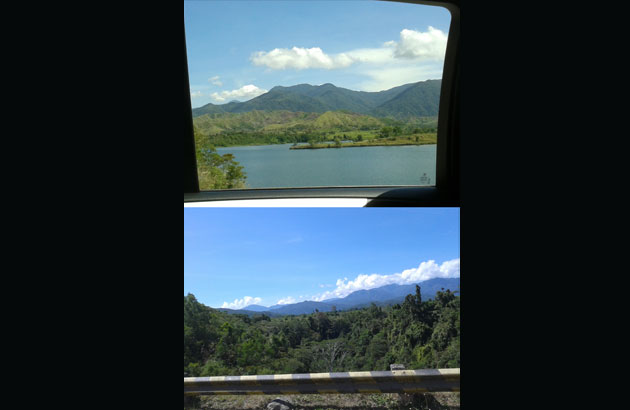
I sleep as best I can, but there’s always something pleasurable about using a car to get out of the city. Even in the dark, I can see the roadside get greener. It gets more difficult to snooze when the sun comes up, in part because of the light.
We also get lost, or at least we make a lot of wrong turns. More than once the joke is made that we’re touring Luzon, and at least one person fires back that we already have, every year, for years.
The eventual time is something like five and a half hours. Getting to Aurora offers something for the eyes. It’s country beauty typical to the Philippines — rice fields and lush mountains, and soon the turquoise waters — but it’s one of those things you easily take for granted when you’re in Manila too long. The more I absorb the view, the more I just want to reach the coast and get into the water.
But first, the Balete Tree.
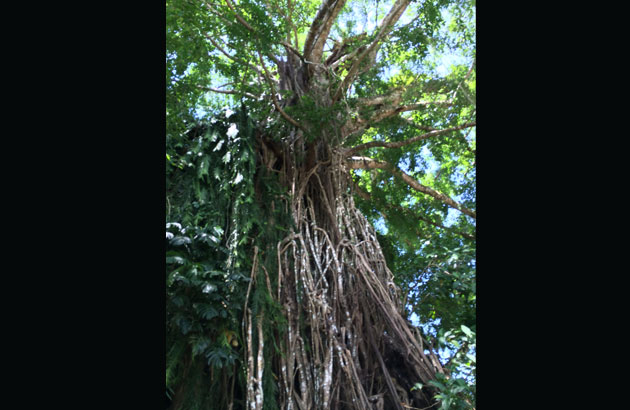
“It’s like the tale of the big fish,†someone comments, as we stare up at the balete. It’s huge. We’re a big group, but even all holding hands and stretching out our arms we can’t make a closed ring around it. “Every time someone tells the story, the tale gets bigger.†We’re told that the tree is upwards of 400 years old, and the cynics in the group don’t want to believe it because it is, for all intents and purposes, a tourist site. But I don’t know. It looks pretty damn old.
At the very least, it looks like it took that long to grow that big. Balete trees are curious because they look like several thin trees twisting around and into each other to form a great big one.
They can also be pretty menacing, if we’re acknowledging our folklore right. This one seems sedate, if not content with the people walking in and around it. Maybe it knows it has to be.
It’s interesting inside, and cool. The number of people going in and out of the tree all at once might flaw the experience, but it doesn’t take away from being able to climb up a gigantic tree.

We go for lunch next. We’re not staying at Costa Pacifica, because the philosophy of our group is that individual families get to vacation at nice places as they please anytime, so for our trips we’re not to stay in too nice a place as part of the experience. And Costa Pacifica is nice.
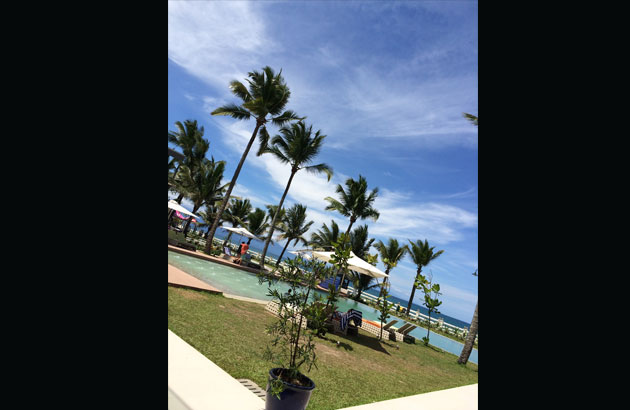
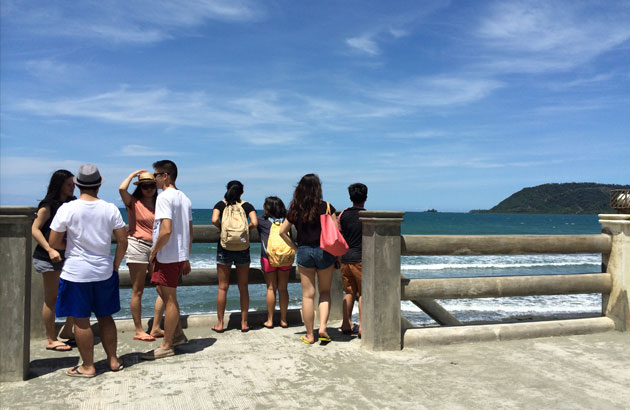
After lunch the kids take a look around, and we find that it’s part of the strip of boardwalk that is the built up surfing scene. We’re off season for real surfers, who probably would not be staying at a place like Costa Pacifica. But it’s perfect for beginners. Board rental is a breeze and the beach can’t be beat.
At the boardwalk, we dodge some skaters and some guys trying to sell us pearls. We run into some friends. We look at the long line of the coast. It’s great to be there.
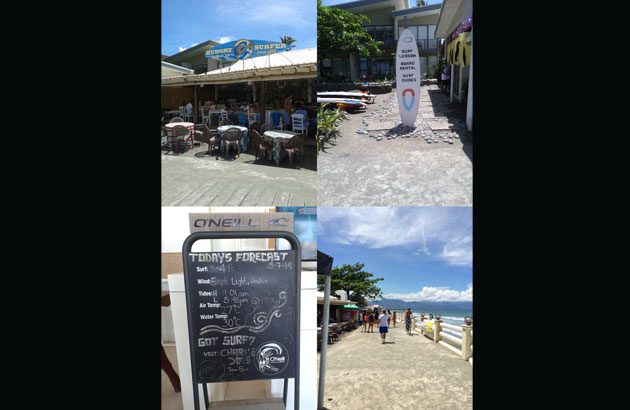
We settle in after lunch. I get put in the beach house along with the older kids. It’s a quintessential beach cottage — raised, with a lovely deck, and a shower outside to hose down. We’re rather a lot, but it’s comfortable. We get changed and make a beeline for the beach.
The waves are strong. We only have surfboards of the pro kind on hand, so there isn’t much success that day. We’re also rather confined because of the strong undertow, and we’re advised more than once to be careful. But we enjoy ourselves a lot. It’s just us, the water, the sand, and the sun. Later in the afternoon, when it is less hot, the boys start a game of Ultimate Frisbee.
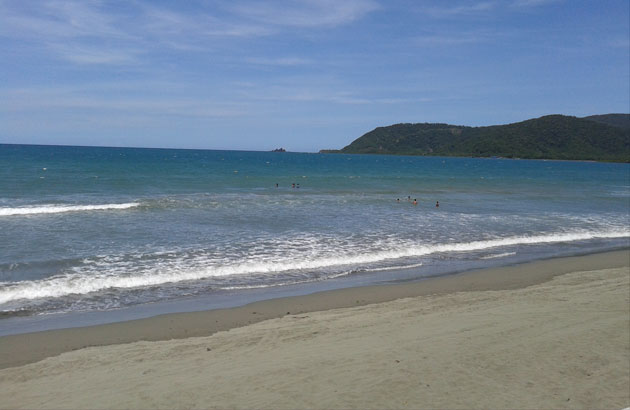
The next day we’re keen to see sights. We start with a museum. The Museo de Baler was noticeable on our way in because of the building’s architecture, and its place in a well-maintained kind of park. Its beauty is amplified by the fact that it houses art and history.
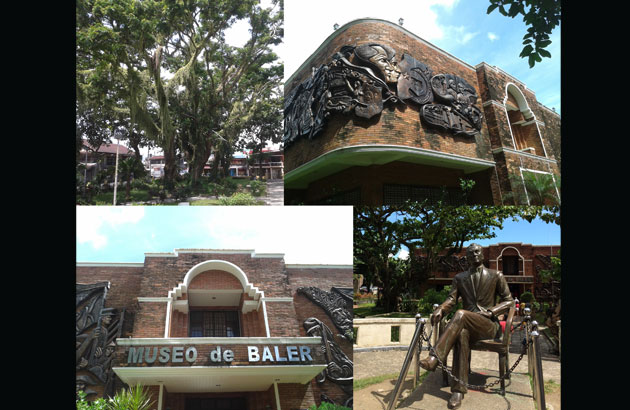
We go to the church and then to the Doña Aurora house. The latter is easily called “the house of our first president.†There is something amusing to some of the kids that Aurora is a province on its own, right next to Quezon.
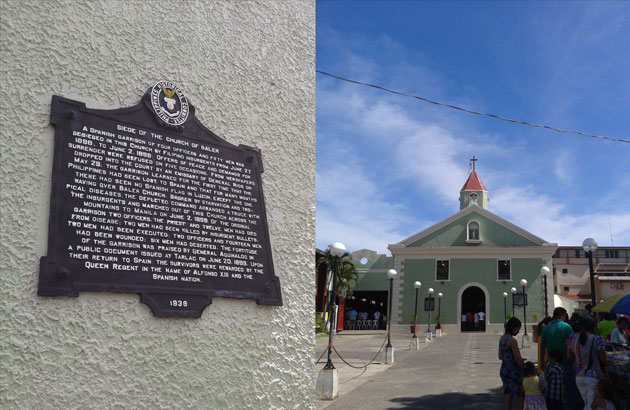
Everywhere we see signs that there is a friendship with Spain being promoted in the name of cultural preservation and furthering of the arts. There is also a plaque at the church explaining the Siege of the Church of Baler, wherein the valor of the Spanish officers who holed up against Filipino Insurgents is honored. It’s an interesting picture of what the place wants our history to be.
That’s the thing about the Philippines — there’s a cohesive narrative in our history that is made up of many threads, and some of them might need pulling.
***
We make a quick stop at the Ermita Hill, and then literally make the climb for the view. The heat is as unbelievable as what we see. To say that we see is brilliant is accurate — the sun is high in the sky, and beautiful.

A huge sail of clouds sits against a blue sky, reflected off the water of a river that flows into the sea. Everything else is lush, summer green. It’s not unspoiled, exactly, but it’s amazing all the same.
We sweat through all the pictures we take, and then finally make our way to the beach.
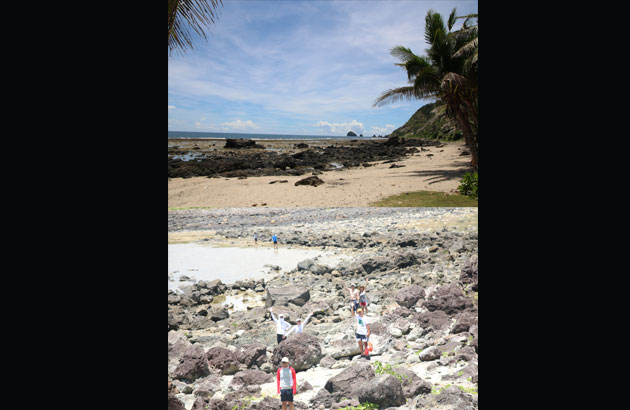
But we have to work for our water — we hit Dela Torre at a low tide, and there is a bit of a walk through tepid, starfish-riddled water and a climb over sharp rocks. Water shoes are an advantage, for those who have them. I notice the little sea urchins in many of the crevices, and tread carefully.
Our large group makes an exodus the promised pool: a dip into the rocks where the sea whirls in and out. It’s refreshing as it is fun, to get tossed by the water’s current. The stronger swimmers venture further from the rest, who have fun clinging to the rocks when we need a rest.
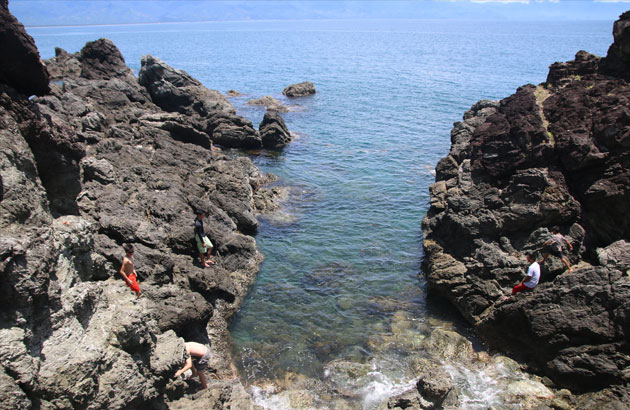
We head back as the second half of our group arrives. We’ve been eating well, but the arrival of several more families means more food. Someone brings steak for that night’s dinner, and it is as glorious as you would expect after a day of sightseeing and surfing.
As far as local cuisine goes, the binakol is fantastic. The coconuts have been impressive anyway — apparently coconuts in Aurora grow about 20 percent larger than the national average; it is supposedly a result of the unusually high salt content of the sea — but having chicken soup out of them is nothing short of delicious.
We’re also treated to a lot of suman, picked up at the market. They’re excellently made, maybe because of the coconut milk, maybe because of the approximate balance of glutinous rice to sugar. But it’s the coco jam that makes it exquisite. It’s tangy, not overly sweet, and is not quite jam-like as the name suggests, and is altogether amazing.
The label on the jar informs us that it comes out of Mama Pacing’s kitchen. Well, Mama Pacing’s homemade coco jam is out of this world, and before the trip is over each family loads up on several jars of the stuff. (There’s great peanut butter, too, but the coco jam is the main hit). I have a feeling that from now on, suman will never be complete without it.
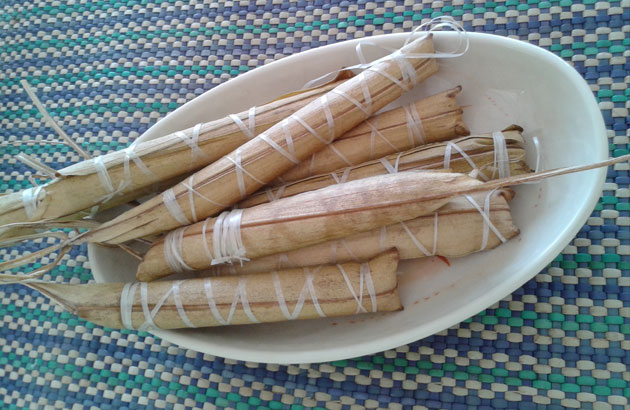
After lunch, a bunch of us spend the day surfing at Costa Pacifica’s beach front. The advantage of the boardwalk is the view of the waves it affords, but this afternoon the view is a little dismaying. There are a lot of people.
It used to be that the advantage of not going to Boracay was how you could be free of a crowd that belonged in a megamall. Not so, anymore.
But the afternoon yields good results for those who want to try their hand at surfing. Baler’s promised waves deliver, despite not being the season, and those of us who want a chance to learn get it. We manage to rent beginner’s boards (foam) and get a little instruction. And what do you know, the afternoon is more of a success than yesterday.
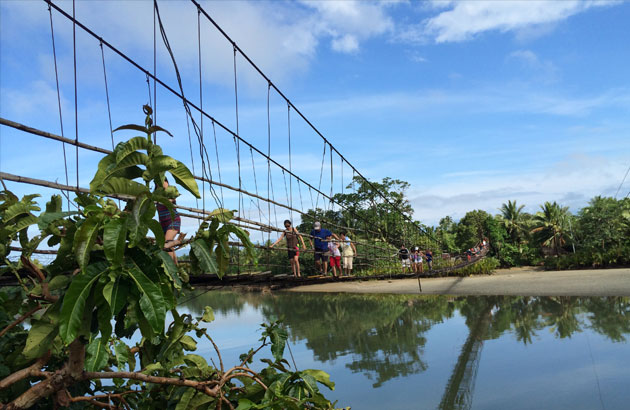
The next day’s big event is the waterfall, but first we make a quick stop at the hanging bridge.
Hanging bridges are curious. They’re akin to canopy walks in that they are supposed to be the best way to work a tourist site in balance with the nature of the area. And they’re always thrilling.
Our group had fun, with the more mischievous ones unable to resist rocking the bridge. The scare factor was heightened considerably as we moved along, in part because of the swinging but also because we noticed the planks of rotting wood beneath our feet.
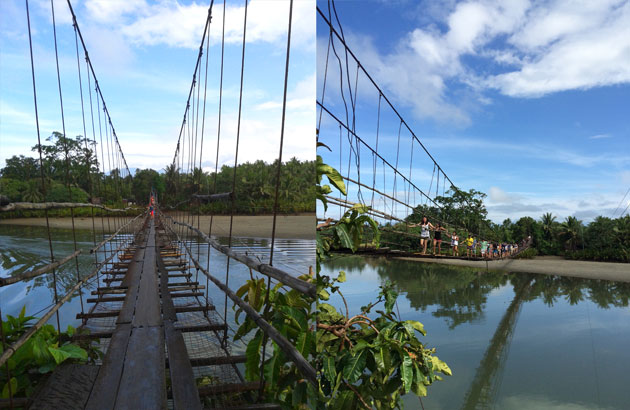
More than one argument breaks out, about who’s scared and who’s not, and also whether the bridge has enough structural integrity to hold us all at once for a picture. A jumping-in-mid-air picture.
The consensus is no, but it does not stop some of the younger ones from treating the bridge like a trampoline. Still, we made it there and back intact enough to move on to the falls.
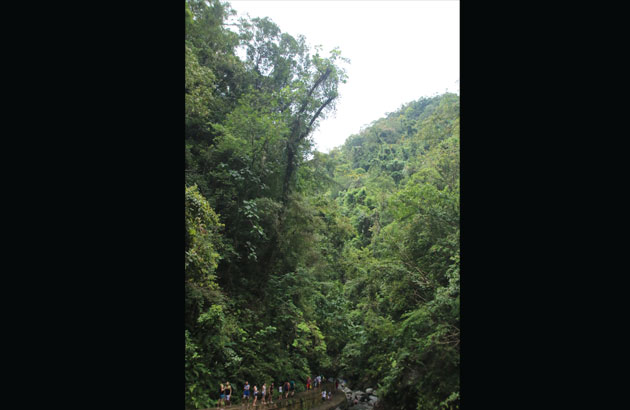
There is some satisfaction in visiting a place called the Mother Falls on the day before Mother’s Day, and for many of us with our mothers there.
It’s a bit of a trek, but all the moms make it. So do I, in fact, and I am one of the least adventurous ones out of the kids. It’s a forty minute “hikeâ€, and we anticipate the hardship will come from the rocky parts of the river. Once again, we underestimate what a high volume of people can do.
Things haven’t been the same since Baler got its tourism game on, or at least that is the impression some of the locals give. This hike to the waterfall is like a series of ominous signs. There’s a long stretch in the beginning that leads from the barangay up to the falls, and it’s flowing with tricycles. It’s a rough road for a vehicle, and I have no desire to be tossed around inside a tricycle for exorbitant prices (per head). But the heat, the litter, and the constant passing of motors all unite to make this part of the walk less than pleasant. Sometimes we are too good at ruining what we have.
It gets better the closer we get to the falls, in terms of litter — there are conscious efforts to remind visitors that they’ve got to mind their waste. The number of people, though, doesn’t let up, and because I can’t help it I wonder how many of them would be there without the tricycle ride. (Later, we learn that the falls had been featured on TV by Kris Aquino, reminding us all of the fearsome power of celebrity talk shows).
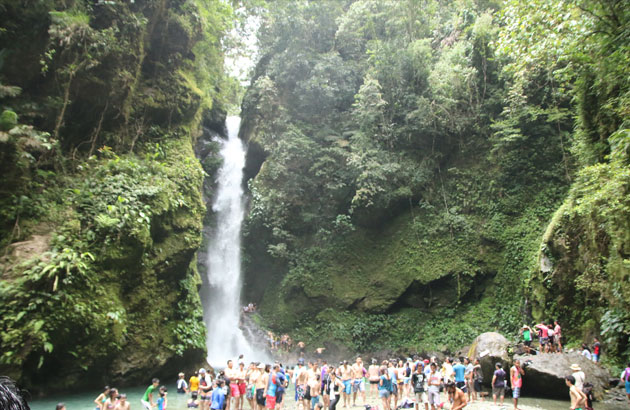
“Can you imagine,†someone says to me, as we look at all the people, “when we were here in before summer, there was just the two of us, and nobody else here?†She’s referring to herself and her mother, who did the ocular for the trip we’re currently on.
The thing is, I can imagine. The falls really are fantastic. The pools are something out of a fairy story. At present there may be one too many bodies, but there’s no denying the beauty of the place. Not yet.
All of this I briefly forget when my body hits the water. It’s cold, properly cold, and despite the heat of the day it only takes a minute before I wonder if I am going to go hypothermic. I get up, sputtering. I haven’t been that cold since the East Coast.
Some of the boys start a race to the waterfall from the pool’s edge. More than one of them thinks they have brain freeze afterwards. All our pictures have clenched teeth. But it’s exhilarating all the same, the magic of a waterfall.
On the way back, I slip and twist my knee a bit.
It’s not serious — at most a minor sprain. I’m able to walk back to the barangay, despite the buckling.
A tricycle driver offers me a ride down for free. I thank him, but refuse. Conversely, another tricycle driver nearly runs me over (that’s the thing about the great outdoors — you never know what might try to kill you). It’s just the nature of the road, I suppose, when both drivers and pedestrians make use of it at once. But I have to wonder why there has to be vehicles in the first place.
***
The next day is Sunday, Mother’s Day, and our last day. We make the most of it. We go to Dicasalarin Cove. It’s a genteel, private place. We’re not the exclusive guests, but it feels a lot less crowded than the other sites we’ve been to.

(And the long drive there afforded us our best view yet. It’s always been true that there is no blue like the blue of our waters, but every now and then I see a place that reinforces it. The drive to the cove is a view that tropical paradise postcards wish they could capture.)
It’s no less hot today than previous days. The water is sublime, and we enjoy the hours before lunch together under the sun. It’s truly a very pretty cove, because the land as well as the sea is full of natural beauty. I imagine the view from sea to shore is as lovely as the view from shore to sea.
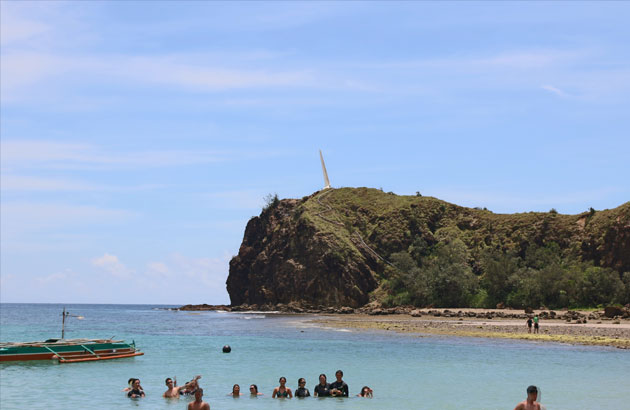
We get out of the water for lunch. I am amused when some of the younger ones complain of the sea’s saltiness, but later I feel it on my lips and sheepishly retract my condescension. It’s a lot of salt. I hope Baler’s coconuts are thriving.
We do a few more sites of interest after lunch — the Artist’s Village, and the ultra modern lighthouse — but we’re making a late afternoon trip home and so we start winding down. We’re hoping to leave by 5 p.m., with enough daylight to get out of Aurora but making good time over the traffic.
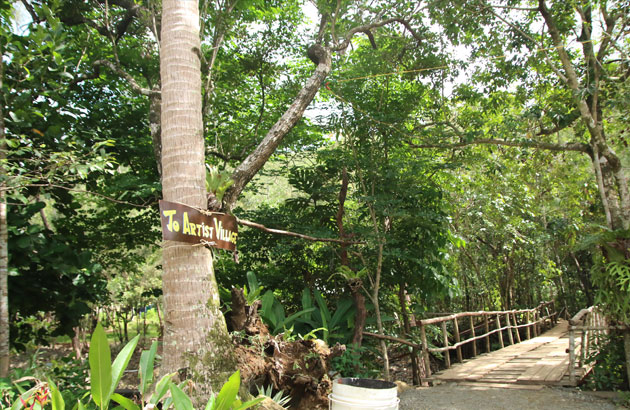
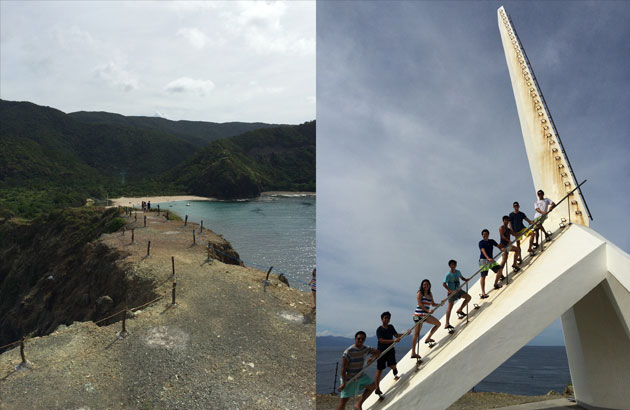
As soon as we start discussing traffic I realize the trip really is at an end. It’s saddening in the way you know your fun has to end, but also in the way you know good times don’t last forever. All that’s left is to wash up, pack up, and go home.
But later, in our 10-car convoy home, we get our last hurrah. The sun sets over miles of greenery, mountains and rice fields alike, giving us a view so beautiful we don’t mind being delayed a bit to see the light touch everything. Some of us even get down to catch it all in pictures, but, clichéd as it sounds, none of them manage to capture the experience of driving through such a majestic view.
I don’t know how it happened, but it was like a perfect good-bye: the glorious sunset light, over the lush province of Aurora as we left it. It’s a weird thought, abstract and irrational, but as we drive down I think: if I ever go back, I hope it’s still there.



















